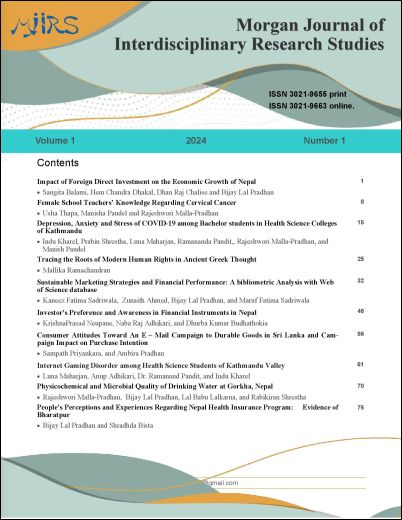Female School Teachers' Knowledge Regarding Cervical Cancer
DOI:
https://doi.org/10.3126/mjirs.v1i1.63311Keywords:
Cervical cancer, Female school teachers, KnowledgeAbstract
Cervical cancer is a globally leading cause of mortality and morbidity in females. It is a curable cancer if diagnosed in the early stage. Lack of awareness of screening methods, risk factors, and early symptoms may lead to a late diagnosis. This study aimed to assess the knowledge regarding cervical cancer among female school teachers. A cross-sectional study design was adopted to assess the knowledge regarding cervical cancer among 106 female teachers. A non-probability purposive sampling technique was used to select the sample. Data was collected using a structured self-administered questionnaire and subsequently entered into IBM SPSS version 22 for analysis. The findings of the study revealed that the mean age was 30.45±3.911 and the majority of respondents were married (95.3%). Similarly, 72.6% of respondents had bachelor-level education, and 12.3% respondents had a family history of cervical cancer. Regarding the level of knowledge, the majority (64.2%) had a good level of knowledge, 25.5% had moderate level of knowledge, and 10.4% had poor level of knowledge. There was a significant association between levels of knowledge and religion (p=0.006). Findings indicate that a substantial percentage of respondents possess a good level of knowledge on cervical cancer.
Downloads
Downloads
Published
How to Cite
Issue
Section
License
Copyright (c) 2024 Morgan International College

This work is licensed under a Creative Commons Attribution-ShareAlike 4.0 International License.
This license enables reusers to distribute, remix, adapt, and build upon the material in any medium or format, so long as attribution is given to the creator. The license allows for commercial use. If you remix, adapt, or build upon the material, you must license the modified material under identical terms.




